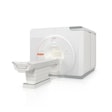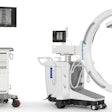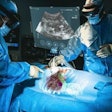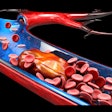
AuntMinnie.com is pleased to present the tenth in an ongoing series of practice management articles contributed by the Radiology Consulting Group in Boston. This twice-monthly series addresses topics and issues of concern to radiology administrators and business managers.
By Barbara A. HubleyRadiology Consulting Group

Logistics
An operational needs assessment should be completed in order to evaluate the current reading environment. Each modality has a variety of needs, such as its location and the location of its reading sites, as well as its PACS deployment schedule. Three questions to ask for each modality in the system are:
- How are films currently being read?
- How many workstations will be required in a filmless environment?
- How will hard-copy comparisons be managed?
The Image Service Center (ISC, formerly the film library) at Massachusetts General Hospital (MGH) in Boston has two primary areas for film and image requests. The main ISC handles all outpatient requests, including legal and scheduled outpatient clinic visits. This area stores master folders for nine months and mammograms for six months. All other master folders are stored at an off-site warehouse.
The Dodd Room services all inpatient requests, including providing radiologists with conference and consultation hard and soft copies, and operating room requests. All current inpatient master folders are stored at this location. The Dodd Room is also the reading site for abdominal, thoracic, pediatric, and 3-D imaging. In addition, there is a 25-seat theater with a projection screen for teaching conferences.
Both of these areas require staff that is knowledgeable in film methodology as well as digital imaging. Standard operating procedures and competencies were created for each function in all areas of the image service center. These tools not only help staff to operate in a consistent manner; competencies also help identify where further training is required.
Film storage
One of the many benefits of PACS is the reduction of hard-copy films to free up storage space. An annual purge is beneficial and also helps reduce storage space requirements. In some cases, it may be possible to receive revenue from silver recovery from film slated for destruction.
The optimum goal is to be 100% filmless. However, until all service areas are integrated into the PACS, and physicians are comfortable with reading from monitors, studies may be printed. It is important to evaluate whether it is more efficient to refile printed studies and not ask for their return, or ask for their return and refile for future requests.
Because MGH is a multidisciplinary institution, studies are often requested by more than one physician. Physicians at the institution are encouraged to view the images electronically via a Web browser. However, certain modalities and surgeons still require hard copies for surgical purposes.
Staffing and training
Before an image center gives up any full-time equivalents (FTEs), be sure to evaluate how each modality will be managed. Optimizing the technology can eventually reduce the number of FTEs required. However, there will be a transition period before this can be accomplished.
It is important to remember that there will be a period of working in a dual analog/digital environment. Pulling and hanging comparisons, as well as bringing images to the workstations, require human resources. Additionally, quality assurance programs, such as monitoring unread studies, also require a human presence.
This is also a good time to transition staff and create job descriptions that will match the new roles. At MGH, former film librarians are now called image service representatives (ISRs). These individuals require new skill sets. Not only are the ISRs required to hang hard-copy films and refile, they are also required to have computer skills and understand PACS basics. The ISRs are also the resources that the radiologists will refer to when they have a problem or question regarding soft-copy images.
A comprehensive training program is essential to help with this transition. Competency-based training ensures consistency and identifies areas where additional training is needed. The use of tools such as informational pocket cards, educational mouse pads, and in-services adds value to any training program.
Film and image requests
It is also essential to evaluate the process for requesting hard-copy films and images. Set clear policies and get the word out about these procedures to customers. For example, what will be the expected turnaround time for requests? Be careful not to overextend your facility’s resources, and ensure that turnaround times are realistic. If the service delivery time is met, customers will be happy.
As part of the dual-environment transition period, the image center staff will have to search and manage requests in two systems for previous studies. The perception that it only takes a few seconds to print a study is common. In practice, however, this may not necessarily be true.
For instance, an MR study may have to be window-leveled by a technologist, and then assessed for quality control purposes. Studies such as these will take much longer to print than ones containing a plain chest image.
There will always be requests by patients for copies of their studies for second opinions outside the institution. A department may want to consider other media, such as CDs, for these types of requests. Another technology worth investigating is the creation of an intradepartmental Web site to place orders instead of the traditional phone call for internal requests.
With the help of Boston-based Partners Healthcare's information technology department, an intranet Web site was created two years ago at MGH. The site handles approximately 100 requests for almost 275 films and images weekly.
Customers send requests via the Web site and receive a confirmation number once the request is submitted. When the request is processed and completed, an ISR notifies the customer. The Image Service Center is currently working on an automatic reply system that will e-mail or page the customer when their request has been completed.
Usability
Make it as easy as possible to access soft-copy images. Desktop viewing stations will encourage physicians to take advantage of the benefits of PACS from their offices and reduce traffic in the ISC. This will not only reduce the number of incoming calls, it will also reduce the volume of customers visiting the film library.
Evaluating all the possibilities to enhance existing operations should be included in any strategic plan. It is also important to gather data regarding volume and how requests are made prior to implementing any operational improvements. Reviewing the physical environment and training opportunities will provide the front -end advantage that is necessary for a successful transition to digital.
By Barbara A. HubleyAuntMinnie.com contributing writer
August 29, 2001
Hubley is senior operations manager of clinical support and customer service in the department of radiology at MGH.
Related Reading
Site development is key to marketing radiology on the Web, August 9, 2001
e-Radiology enhances marketing opportunities, July 24, 2001
Proper training can reduce errors in PACS implementation, July 4, 2001
Strategic marketing brings in referring physicians, June 27, 2001
Radiology and orthopedics join forces to cut throughput time, June 13, 2001
Copyright © 2001 AuntMinnie.com

















